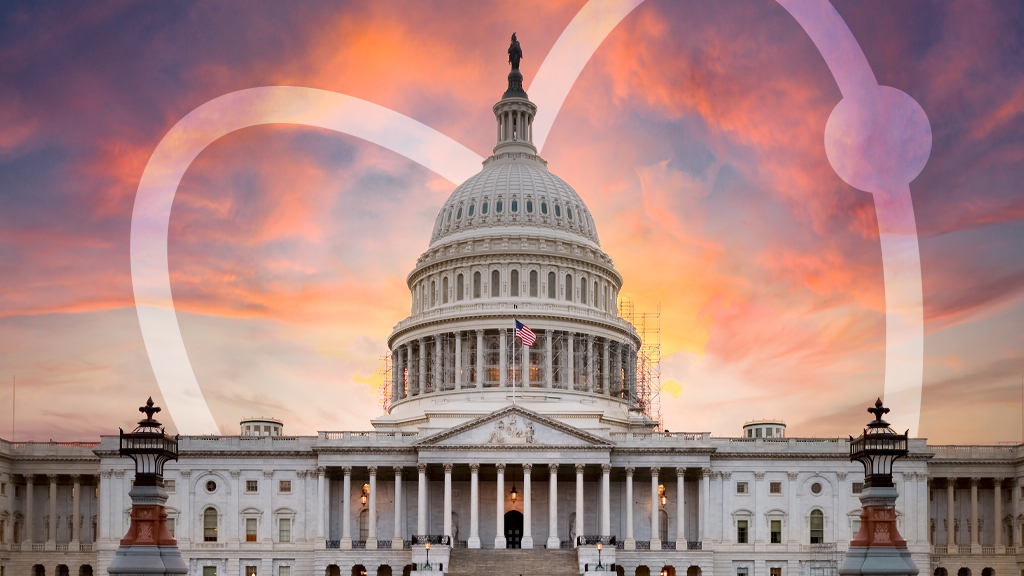Legislative Update
Congress Finalizes FY24 Funding; ESSER Funding; and State of U.S. Science and Engineering 2024
By NSTA Legislative Affairs and Advocacy Team
Posted on 2024-04-11

Disclaimer: The views expressed in this blog post are those of the author(s) and do not necessarily reflect the official position of the National Science Teaching Association (NSTA).
Congress Finalizes Funding for FY24
In late March, Congress passed a $1.2 trillion spending bill to provide funding for Fiscal Year (FY) 2024 for the remaining eight appropriations bills, including the Labor, Health and Human Services, Education (LHHS) bill.
The FY24 package provides $79.1 billion to the Department of Education, which is $500 million below FY23 funding. Most K–12 education programs received level funding, while Title I and the Individuals with Disabilities Education Act (IDEA) received increases of $20 million. The House FY24 proposal would have cut Title I funding by 80%.
These programs were level-funded: Every Student Succeeds Act (ESSA) Title II at $2.19 billion; 21st-Century Learning Community Learning Centers at $1.3 billion; and ESSA Title IV at $1.38 billion.
In addition to Title I and IDEA, programs that received increased funding include
- Rural Education Achievement Program (REAP): $220 million, an increase of $5 million;
- Impact Aid: $1.625 billion, an increase of $7 million;
- Perkins Career and Technical Education (State grants): $1.439 billion, an increase of $10 million;
- Head Start: $12.3 billion, an increase of $275 million; and
- Child Care and Development Block Grants (CCDBG): $8.7 billion, an increase of $725 million.
The Education Innovation and Research program was cut by $25 million, and the Teacher and School Leader Incentive Grants program was cut by $113 million.
Although FY24 runs from October 1, 2023, through September 30, 2024, it is anticipated that FY24 funding will be in schools for the 2024–25 school year.
Meanwhile, President Biden released his budget for FY25, proposing a 3.9% increase for the U.S. Department of Education, for a total of $82 billion. The president’s budget includes an $8 billion Academic Acceleration and Achievement grant program, a competitive program for states and districts to support and sustain learning interventions developed with COVID emergency funds. Learn more here.
How Is Your District Using Their American Rescue Plan (ARP) ESSER Funds?
Districts are scrambling to use the final federal Elementary and Secondary School Emergency Relief (ESSER) dollars allocated to them to support student learning in the aftermath of the pandemic. Learn how ESSER funding works and how it can be used for science education professional learning, including attendance at the NSTA National Conference in New Orleans this November. Two sites to note are these:
This Letter from Deputy Secretary Marten re: Using Federal Funds to Support STEM Education Strategies provides concrete examples of how federal funds can support efforts to improve preK–12 instruction and student outcomes in the science and STEM fields.
This Carolina Knowledge Center website offers Elementary and Secondary Education Act (ESEA) guidance on the use of ARP ESSER III funds for eligible science purchases by districts, including capital equipment, and shows funds eligible for science investments.
NSB Releases the State of U.S. Science and Engineering Indicators 2024
Last month, the National Science Board (NSB) released The State of U.S. Science and Engineering (S&E) Indicators 2024 report (Indicators), which details key findings from the nine thematic reports that make up Indicators and provides in-depth data and information on science, technology, engineering, and mathematics (STEM) education at all degree levels. Key highlights from the report include the following:
- The COVID-19 pandemic led to severe disruptions in elementary and secondary student learning in the United States. Student mathematics performance showed a sharp decline in 2022, compared with pre-pandemic performance in 2019.
- The number of certificates and degrees awarded in S&E fields increased at each degree level in the past decade, with total S&E awards (including all certificates and associate’s, bachelor’s, master’s, and doctoral degrees) increasing from 982,000 in 2012 to 1,310,000 in 2021.
- Many groups of Americans remained underrepresented among S&E degree recipients when compared to their share of the U.S. population ages 20–34 years old. The percentage of women varied significantly depending on S&E field.
- The U.S. STEM workforce comprised 36.8 million people in diverse occupations that require STEM knowledge and expertise in 2021, constituting 24% of the total U.S. workforce. The STEM workforce encompasses all workers who use STEM skills in their jobs, regardless of degree level. It includes 17.5 million workers with at least a bachelor’s degree and 19.3 million workers without a bachelor’s degree.
Read the study here.
Stay tuned for more advocacy and policy updates in future issues of NSTA Reports.
The mission of NSTA is to transform science education to benefit all through professional learning, partnerships, and advocacy.


